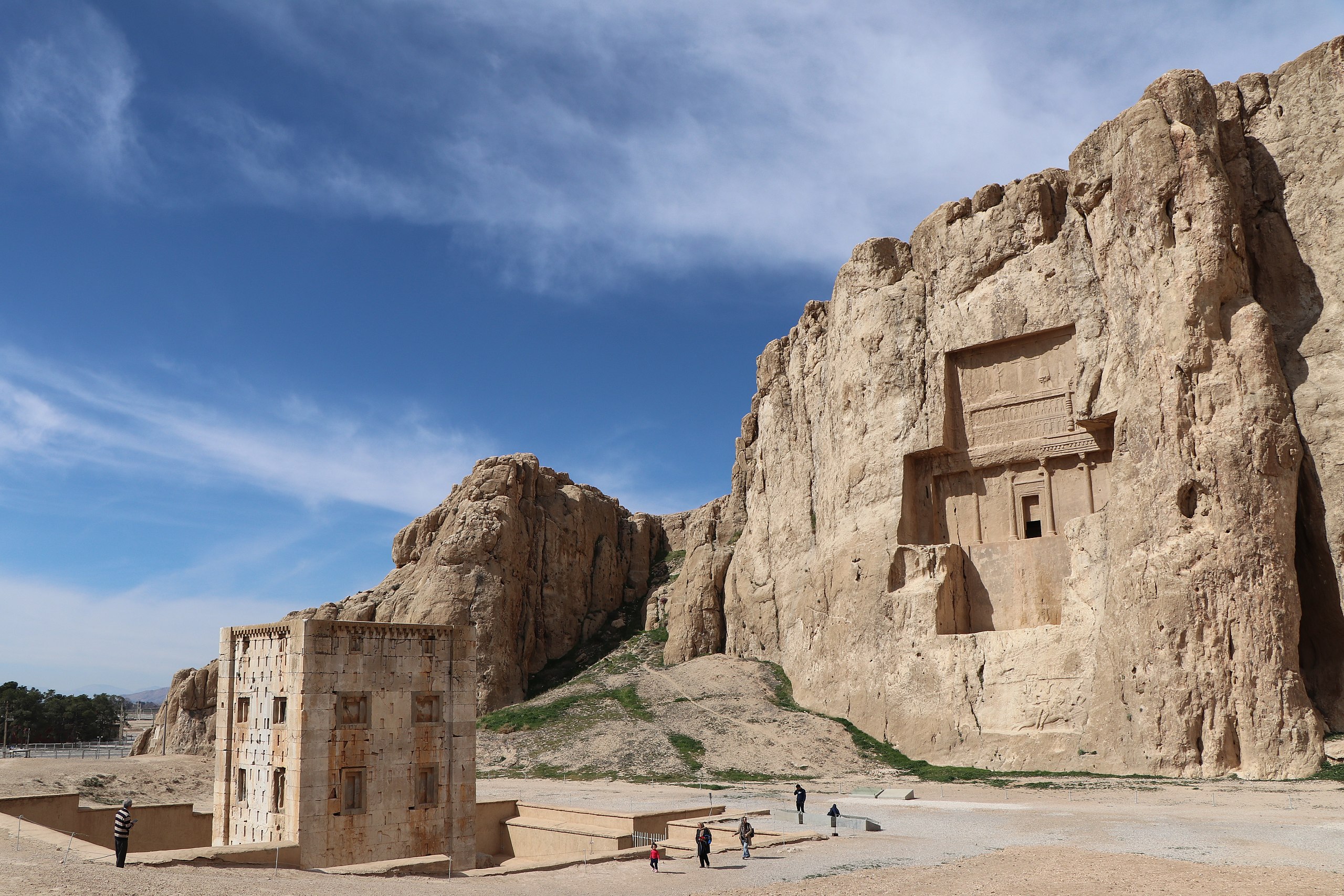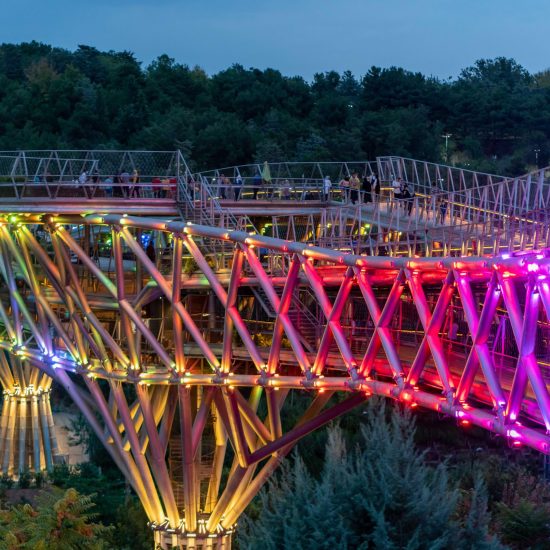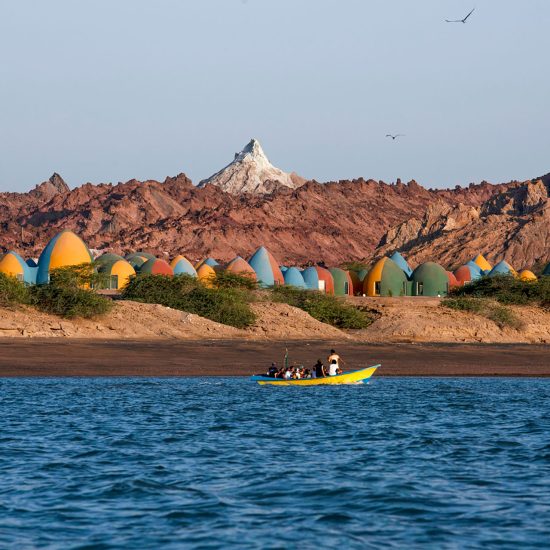
Naqsh-e Rostam, Iran
Naqsh-e Rostam, located just 12 kilometers northwest of Persepolis in Fars Province, Iran, is a majestic archaeological site that embodies over 1,000 years of Persian history.
Carved into a rugged cliff face, this necropolis houses the rock-cut tombs of Achaemenid kings, Sassanid reliefs, and Elamite carvings, making it one of the most historically rich and visually striking heritage sites in Iran.
Historical Background
Naqsh-e Rostam spans three major eras of Iranian history:
- Elamite Period (c. 1300 BCE): The earliest carvings on the cliff date back to this time.
- Achaemenid Period (c. 500 BCE): The tombs of powerful kings like Darius I, Xerxes I, Artaxerxes I, and Darius II are cut high into the cliff.
- Sassanid Period (3rd–7th century CE): Large rock reliefs beneath the tombs depict epic scenes of royal investitures, battles, and religious ceremonies.
Highlights of Naqsh-e Rostam
1. The Tombs of Achaemenid Kings
Each tomb is shaped like a large cross and elevated high on the cliff wall. The façades resemble palace entrances, symbolizing the eternal power of the kings in the afterlife.
Inscriptions in Old Persian, Elamite, and Babylonian provide historical context for modern scholars.
2. The Ka’ba-ye Zartosht
This mysterious stone tower structure, built in the Achaemenid era, stands in front of the tombs. While its original function remains debated, it’s believed to have had religious or ceremonial significance.
3. Sassanid Rock Reliefs
Nine large Sassanid bas-reliefs show scenes like:
- Shapur I’s victory over Roman emperors
- Coronation of Ardashir I
- Royal hunting scenes and religious symbolism
These carvings highlight the political power and Zoroastrian beliefs of the Sassanid Empire.
Cultural Importance
Naqsh-e Rostam is not just a tomb complex—it is a sacred historical site that reflects the evolution of Persian kingship, religion, and national identity over centuries.
It offers rare visual documentation of Iran’s imperial past and is often compared to the Valley of the Kings in Egypt for its monumental significance.


